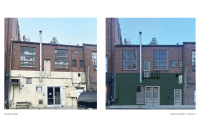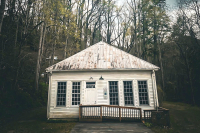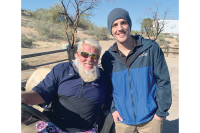Storied Judaculla Rock gets overdue recognition
 Judaculla Rock, a prehistoric gem of the Cherokee and the most heavily inscribed petroglyph in the East, is putting Jackson County on the map.
Judaculla Rock, a prehistoric gem of the Cherokee and the most heavily inscribed petroglyph in the East, is putting Jackson County on the map.
Jackson County and the Eastern Band of Cherokee Indians learned late last month that the rock has been accepted onto the National Register of Historic Places for its unique surface etchings and ancient inscriptions. The soapstone boulder is believed to be part of a mythical Cherokee landscape and one of several such markers across the Nantahala Mountain range.
There’s 80,000 sites on the National Register of Historic Places, from the Mount Vernon Estate to sections of Route 66. However, Judaculla Rock is much older and far more mysterious than most on the list — and in many ways, its designation carries more importance.
“It’s a victory for tribal peoples and it’s a victory for America,” Russ Townsend, tribal historic preservation officer, said about the rock’s recent designation.
Despite 12,000 years of history, only 5 percent or so of the listings on the National Register of Historic Places are of Cherokee origin across the eight-state territory that once comprised the Cherokee Nation.
Related Items
Judaculla Rock is now possibly the only Native American site on the national register heralding from Jackson County, and one of a short list of Native American sites in the state that are on the National Register. In total, North Carolina has about 2,800 sites on the register and Jackson County just under 20, according to the N.C. Historic Preservation Office.
“There are many in Western North Carolina that have made it on to the national register, but there are few that have to do with Native American history,” Townsend said. “Every time we get a Native American site on the national registry it addresses that imbalance.”
Many Cherokee sites have been plowed, burned or dismantled over time. Judaculla Rock, however, has largely maintained its form. Yet, it does face threats from the elements, and due to its off-the-beaten-path location, vandalism as well. In 2002, the rock was tagged extensively with blue spray paint.
Townsend hopes the new designation will bring more visitors and thus less delinquents, and perhaps even prompt its caretakers to invest in security measures to protect it.
Moreover, officials with the register have expressed interest in featuring the rock on the National Register of Historic Places website.
“I hope what it means is that the site becomes more visited, better understood and more respected,” Townsend said. “Not a hidden kind of backwater nook where people go to hang out.”
The Caney Fork property on which Judaculla Rock is located once belonged to private landowners, but its management was taken over by Jackson County in the late 1950s.
During the past couple of years, the Judaculla Rock Preservation Project was launched to improve the viewing experience of the rock and to protect it from degradation — both from the natural elements and from man. The site was generally tidied up, a viewing platform and walkways were built and silt that had filled in around the base of the rock was excavated. This summer, interpretive signs will be placed on the property telling the story and the legend of the rock.
As improvements at the site advance, so does understanding of the rock. At one time, the origin of the carvings were unknown, and left to much speculation. But Scott Ashcraft, an archeologist and co-director of the N.C. Rock Art Project, said they have been determined to have been made between 500 A.D. and 1700 by the Cherokee.
Ashcraft believes the rock, and others like it across the region, were markers of important areas of the Cherokee landscape. Many of the other rocks were since destroyed by development, but at one time, they all worked in unison to tell the story of Judaculla — a slant-eyed Cherokee giant who protected the natural world.
“When it came to the Cherokee mythology, it was the most, or one of the most, important areas described,” Ashcraft said. “After you past that rock, you are entering Judaculla’s landscape.”
Although Judaculla Rock has relatively deep carvings in comparison with many other petroglyphs from that time, each decade begets less detail in the overlapping and clustered drawings. Last January, researchers conducted a laser scan of the rock that may reveal miniscule topography of the rock that the human eye may overlook.
The images, now being analyzed by archeologists, could be especially useful around the perimeter of the rock where the etchings are faint. However, often attributing meaning to the figures on the surface, not identifying them, is the most difficult part.
“The rock is kind of in the eye of the beholder — every time you go out there, you see something different,” Ashcraft said. “But who knows what were missing in terms of minuscule depth.”
Want to go?
From Sylva, drive about 10 miles south on N.C. 107 and take a left onto Caney Fork Road. Go about 3 miles then turn left onto a gravel road and drive just under half-a-mile. The rock is on the right, and parking is on the left. Signs are also posted along the route.
There are no restrooms, water fountains or other such amenities, only the soapstone boulder and a wooden viewing platform. There are also walking trails across the property. Visitors are asked not to sit or walk on the rock.









